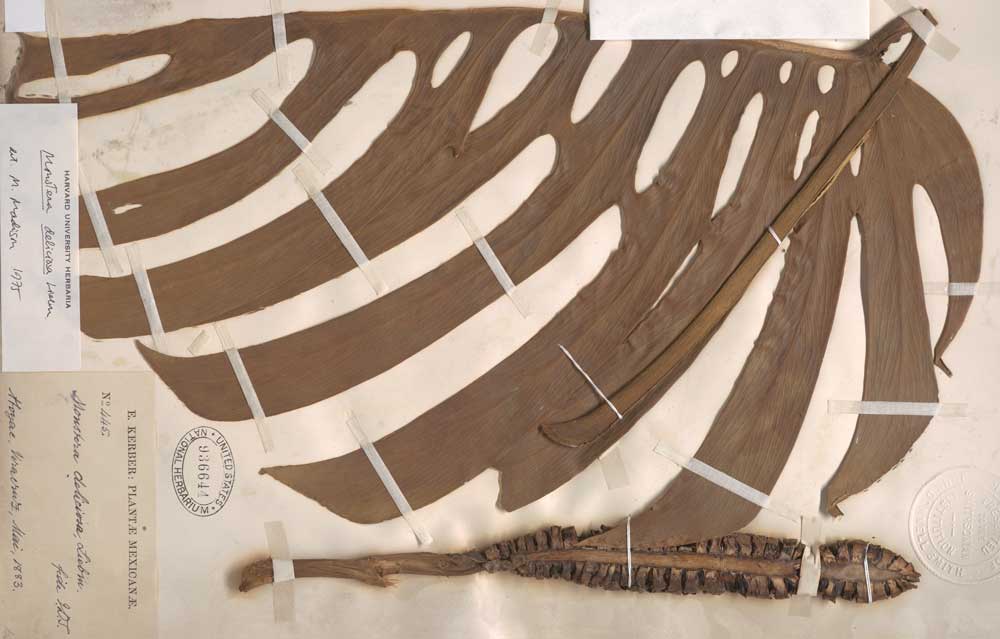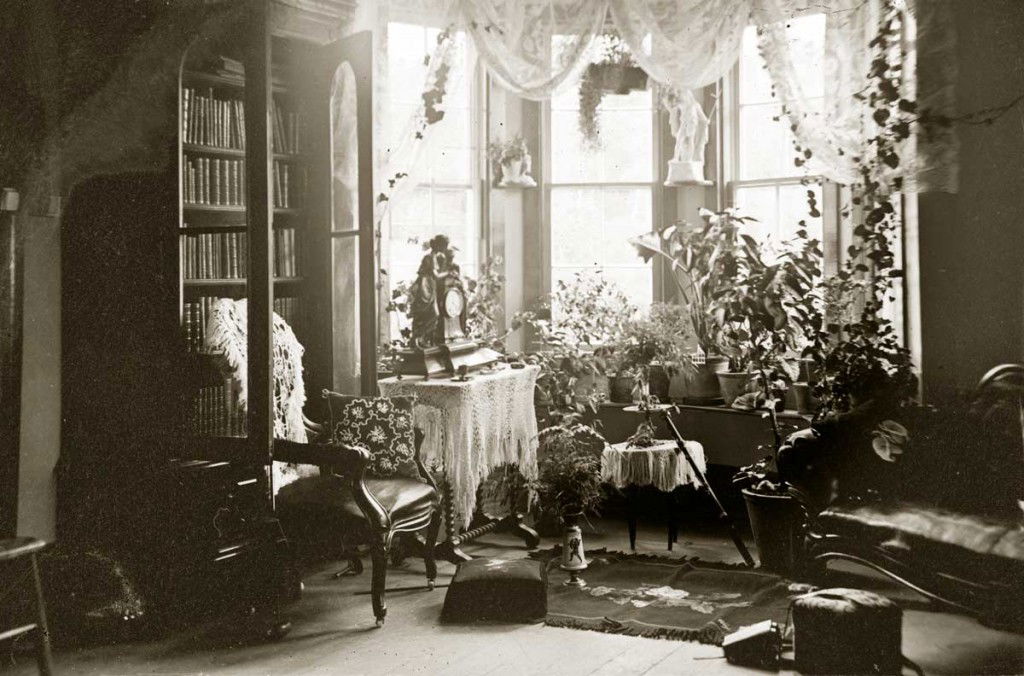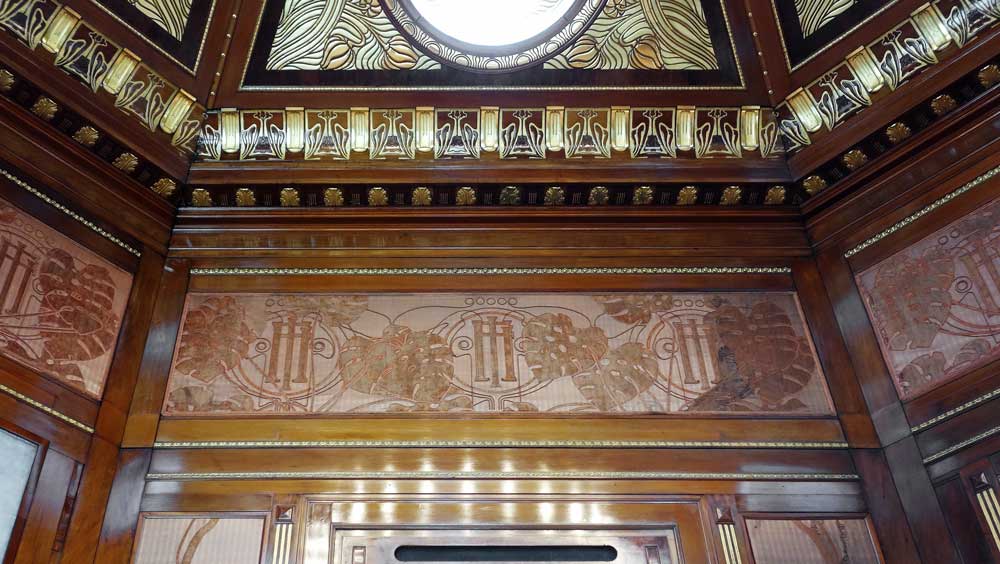Potted Histories | History Today - 6 minutes read

House plants are big business. In 2019 US trade was valued at $1.7 billion. The industry originates from a historical convergence of tropical botany, scientific illustration, the rise of professional horticulture, global supply routes and the growth of hobbyist middle classes with money to spend. Since the 1700s a cascade of exotic plants has been introduced into western horticulture, only a proportion of which have been adopted as house plants. This process of adoption, domestication and marketing has uprooted and denatured these plants from their original cultural and ecological context. Some have become symbols for a distant tropical world, albeit sometimes stereotypical and cliched. One familiar plant that illustrates this history is the spectacular Swiss cheese plant, Monstera deliciosa.
Western botanists exploring the newly accessible tropics were confronted with a dazzling diversity of plants. Nothing in Europe or the Middle East had prepared them for the abundance and diversity of new life forms. One such scientist and traveller was the French botanist and priest Charles Plumier, who published an account of his 1689 travels as a collector in the Caribbean (Description des plantes de l’Amerique, 1693). In it he illustrated the strange growth and spectacular leaves of tropical plants, including relatives of the monstera. Plumier described the genus Monstera in the context of the European flora with which he was more familiar, labelling it ‘Arum hederaceum, amplis foliis perforates’, the climbing arum (ivy like), with big, perforated leaves.
During the late 17th century tropical travellers, such as William Dampier and Georg Eberhard Rumphius, were sending reports back to Europe of exotic plants that could neither be transported live to Europe, nor cultivated if they survived the journey. The extraordinary diversity of the tropics therefore remained distant and unattainable to European collectors. Sketches and descriptions had to suffice. By the 1800s, however, the scientific and financial value of tropical plants was realised. There was a race to collect them as imperial trophies for botanic gardens and as items of commerce for a new generation of commercial plant nurseries, who sold exotica to private collectors.
The introduction of the Wardian case – a weather- and pollution-proof box that allowed plants to survive a sea journey and enabled home hobbyists to grow plants in polluted Victorian homes – changed everything. During the 19th century plant-hunting companies formed to take advantage of this development. A strange blend of scientific enquiry, horticultural aesthetics and strong commercial competition, they collected tropical plants for private plant collectors who themselves were often driven by a sense of social and scientific competition. British companies included Loddiges of Hackney (active from the 1770s to 1850s) and Veitch of Chelsea and Exeter (1800s to 1969). Veitch Nurseries sent a small army of collectors to the tropics looking for exotic plants. They collected in remote and dangerous territories and it was not unusual for a Veitch collector not to make it home. On their arrival in Britain the plants were hurried to the Veitch nurseries where expert propagators and hybridisers considered how to propagate their collections. This work was performed behind locked doors to protect the business from competitors. In the field, commercial plant collectors were notorious for competitive behaviour that could verge on banditry.

Plants flooded into commercial horticulture from across the globe through a number of channels. Dracaena species arrived in early Dutch collections from West Africa; the first African violets from East Africa came to Germany via colonial administrators; the poinsettia, a plant that defines Christmas for millions, arrived in cultivation via a 19th-century US diplomatic mission to Mexico; while that most maligned of house plants, the India Rubber plant, was the focus of a British colonial project for commercial latex trade. The expanding colonial frontlines were hunting grounds for both commercial and government plant collectors. In the process, the history and cultural importance of the plants were often erased. The poinsettia was a culturally important plant for the Aztecs, while the dumb cane (Dieffenbachia) from South America was used as a poison for hunting and is still today valued by Amazonian communities as a protection against evil. This history was subsequently darkened by colonial plantation managers, who used the dumb cane as a punishment for enslaved people and by Nazi scientists who tested its efficiency as a tool for racist exterminations.
Once in cultivation, these plants were subject to complex processes of breeding. The caladiums, indigenous to Brazil, were first bred in Florida and France. In the late 20th century they were then adopted by breeders in Thailand, who created their own spectacular varieties. Similarly, African violets, endemic to the Eastern Arc Mountains of Kenya and Tanzania, were first sent to Germany in 1891, exported to the US a few years later for the next stage of breeding and later adopted with great gusto by breeders behind the Iron Curtain.
The Swiss cheese plants that are sold today can trace their origins to three 19th-century collectors operating in Central America: the Hungarian Wilhelm Friedrich Karwinsky von Karwin; the Danish Frederik Liebmann and the Polish Jósef Warszewicz Ritter von Rawicz. It is quite possible that the plants sold as house plants today are derived from the two collections made by either Liebmann or Warszewicz. M. deliciosa is now propagated by the millions in nurseries in Florida, Thailand and China. Like many other species, it has become divorced from any original ethno-botanical or cultural identity. It has, however, become a global symbol for the tropics, its big, perforated leaves a potent shorthand for all things strange, exotic, tropical and sometimes a bit kitsch. Monstera has served as a design motif for the Art Nouveau architect Otto Wagner in Vienna, the leaves forming the dominant decorative themes for the Hofpavillion at Hietzing railway station. In 2021 the designer Ken Fulk created monstera-inspired sunshades for the revamped Goodtime Hotel on Miami Beach. Today the monstera features as a popular tropical motif on fabrics, clothes, kitchen wares and computer covers.

In the 21st century, one could argue that there has never been a wider range of tropical plants available to the amateur collector. In echoes of the 17th-century ‘Tulipomania’, the contemporary house plant business is experiencing ludicrous levels of speculation and scamming, with stories of variegated monstera plants selling for as much as $40,000.
House plants bring joy to millions, serving as a connection to nature for an increasingly urban population. Yet their history is at best ambivalent. The wild African violets are not benefiting from a multi-million-dollar global trade and are edging towards extinction. On the other hand, Mexican plant breeders are reasserting their cultural links with the plant they call cuetlaxochitl, producing a new generation of Mexican poinsettia plants.
Mike Maunder is Executive Director of the Cambridge Conservation Initiative, University of Cambridge and author of House Plants (Reaktion, 2022).
Source: History Today Feed